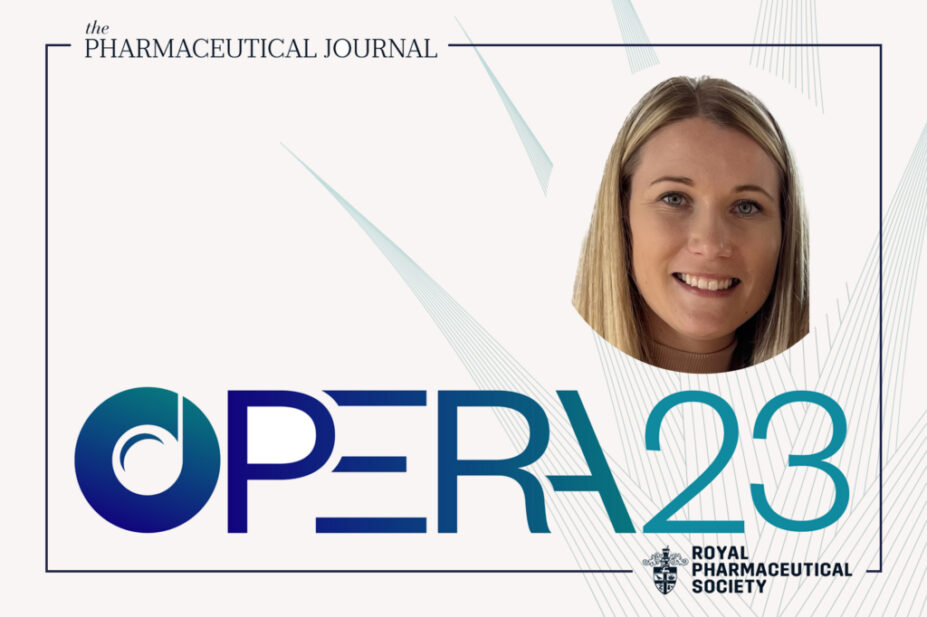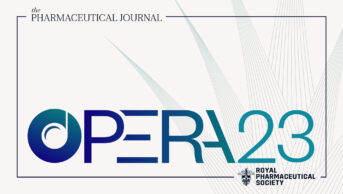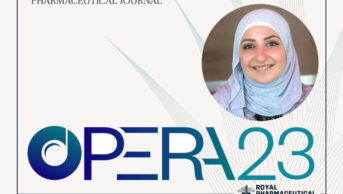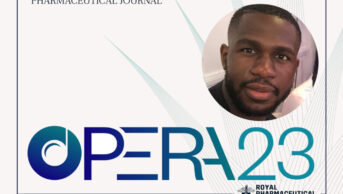
Melissa Rayner’s PhD pioneered a new programme of research in drug therapies to improve regeneration following nerve damage, establishing a flourishing multidisciplinary research programme that includes clinicians, engineers, biomaterials experts and computational modellers.
Peripheral nerve injury affects over 1 million people in Europe and the United States each year and, although neurons do have some capacity to regenerate, this is often incomplete, with many patients left with life-long pain and disability. No treatments are currently available for nerve injury but Melissa is determined to change that.
Melissa graduated with an MPharm degree from Medway School of Pharmacy and completed her preregistration training in community pharmacy, before qualifying as a pharmacist in 2014. She then secured a PhD at University College London (UCL) School of Pharmacy.
“Ever since I got the opportunity to work in a lab during an undergraduate ‘ERASMUS’ placement in Italy, I have always loved wet work and looking at the fundamentals of clinical therapies” she says.
Alongside her laboratory work, Melissa continues to work part time in community pharmacy.
“I’m still very much a pharmacist, motivated by how medicines can improve people’s lives, and being able to do a PhD that combined cell culture and developing novel therapies with a high chance of reaching the clinic in the near term was an ideal combination for me,” she explains.
Her translational and multidisciplinary PhD project combined tissue engineering and drug development to improve regeneration following nerve damage, pioneering the development of small molecule therapeutics for peripheral nerve injury. It also resulted in a patented drug embedded biomaterial for sustained local delivery.
Melissa’s work is already on a pathway towards commercialisation having worked with Glialign Ltd, which was established in 2018 to take forward the work of UCL academics in engineering live neural tissue, to develop a stem cell-based tissue engineered product to repair peripheral nerves.
Melissa designed, conducted and published a major preclinical study, which has resulted in a clinical grade advanced therapy medicinal product (ATMP). Her expertise in modelling neurodegeneration has also been recognised externally, with Melissa having been approached by Proctor & Gamble to work in a consultancy role on cell neuropathy.
With translational research, there is often a need for realism about the timeframes involved and this was something Melissa says she had to contend with as she developed her work.
“When you’re a new researcher, you are so passionate and enthusiastic about the end goal, but it’s so important to be realistic about how long new therapies take to develop. Protocols exist for good reason, so it’s crucial to approach your research in a way that produces robust data on safety and efficacy.”
This drive to bring new therapies into clinical practice has led Melissa to explore how to adapt existing drugs that may have a faster route to market. Underpinning all of her work is a focus on the difference these therapies can make to patients.
“At UCL, we have established a nerve injury centre and are in constant dialogue with patients. It’s a huge source of motivation to hear how grateful they are that this type of work is going on and to be able to give them the message that treatments are being developed.
“A drug they can take three times a day to aid nerve regeneration would be hugely beneficial and there is a lot of willingness with patients to support the work we are doing.”
Another aspect that stood out from Melissa’s nomination is her growing experience and knowledge of ATMPs, and the impact this new frontier of medicine is set to have on healthcare. She has authored a chapter in Peripheral Nerve Tissue Engineering and Regeneration and plays a pivotal role on the UCL MPharm programme by providing these students with knowledge of the new wave of products entering clinical practice.
“As pharmacists, we are really going to be at the forefront of these new medicines. We are patient facing and need to be there communicating what these treatments can offer, able to answer their questions and support them through the uncertainties that come being an early recipient of a new therapy.”
Panel comments
“Very strong application. Huge potential for future impact.”
Publications
Smith P, Trueman R, Gregory H et al. Exploring the nerve regenerative capacity of Vitamins B1, B6 and B12 using a novel in vitro 3D co-culture model of neurodegeneration. Submitted to Cells. 2023;IF 7.6
Bhamra S, Arora P, Manka SW et al. Prion propagation is dependent on key amino acids in Charge cluster 2 within the prion protein. Journal of Molecular Biology 2023;28;435(4):167925. doi: 10.1016/j.jmb.2022.167925
Rayner MLD, Kellaway SC, Kingston I et al. Exploring the Nerve Regenerative Capacity of Compounds with Differing Affinity for PPAR in vitro and in vivo. Cells 2022;22;12(1):42. doi: 10.3390/cells12010042
Rayner MLD, Day AGE, Bhangra KS et al. Engineered neural tissue made using clinical-grade human neural stem cells supports regeneration in a long gap peripheral nerve injury model. Acta Biomaterialia 2021;135:203-213. doi: 10.1016/j.actbio.2021.08.030
Rayner MLD, Healy J, Phillips JB et al. Repurposing Small Molecules to Target PPAR-γ as New Therapies for Peripheral Nerve Injuries. Biomolecules. 2021;1;11(9):1301. doi: 10.3390/biom11091301
Rayner MLD, Grillo A, Williams GR et al. (2020) Controlled local release of PPARγ agonists from biomaterials to treat peripheral nerve injury. Journal of Neural Engineering 2020;11;17(4):046030. doi: 10.1088/1741-2552/aba7cc
Rayner MLD, Brown HL, Wilcox M et al. Quantifying regeneration in humans following peripheral nerve injury. Journal of Plastic, Reconstructive & Aesthetic Surgery 2020;73(2):201-208. doi: 10.1016/j.bjps.2019.10.007
Rayner MLD, Laranjeira S, Evans R et al. Developing an in vitro model to screen drugs for nerve regeneration. Anatomical Record 2018;301(10):1628–1637. doi: 10.1002/ar.23918
Finch A, Akpokavie K, Grieb S et al. Characterisation of a haze observed in reconstituted lyophile solutions. Analytical Matters, Pfizer, 2015.
Book chapters
Trueman R, Atkinson E, Hazim H & Rayner MLD. Bioengineering Human Tissues — Central Nervous System. UCL Press. (Accepted for publication)
Rayner MLD & Phillips JB. Advanced therapy medicinal products (ATMPs) — Specialised Pharmaceutical Formulation: The Science and Technology of Dosage Forms, Royal Society of Chemistry, 2021.
Rayner MLD, Healy J, Phillips JB. Drug therapies for peripheral nerve injuries. Peripheral Nerve Tissue Engineering and Regeneration. Springer, 2020.
Published abstracts and conference presentations
Rayner MLD & Phillips JB. Correlation between PPAR-γ affinity and ability of candidate drugs to promote nerve regeneration. ISPNR, 2022.
Rayner MLD, Day AGE, Bhangra KS et al. Engineered neural tissue made using clinical-grade human neural stem cells supports regeneration in a long gap peripheral nerve injury model. Acta Biomater 2021 Nov;135:203-213. doi: 10.1016/j.actbio.2021.08.030
MLD Rayner et al. Development of a nanofibrous PLGA wrap to deliver PPARγ agonists locally in a controlled release manner to treat peripheral nerve injury. TERMIS 6th World Congress, 2021.
Rayner MLD, Day AGE, Bhangra KS et al. Engineered neural tissue made using clinical-grade human neural stem cells supports regeneration in a long gap peripheral nerve injury model. Acta Biomater 2021;135:203-213. doi: 10.1016/j.actbio.2021.08.030
Rayner MLD et al. Ibuprofen-loaded biomaterials for controlled local delivery to treat peripheral nerve injuries. TERMIS 5th World Congress, 2018.
Rayner MLD et al. Using advanced 3D engineered cell cultures to investigate drug synergy in promoting peripheral nerve regeneration. TCES, 2018.
Rayner MLD et al. Developing biomaterials for the local delivery of drugs following peripheral nerve injury. TCES, 2017.
Rayner MLD et al. Investigating the effects of ibuprofen on axonal regeneration and functional recovery following peripheral nerve injury in rats. ISPNR, 2017.
Rayner MLD et al. Investigating the effects of ibuprofen on axonal regeneration and functional recovery following peripheral nerve injury. 6th Vienna Symposium on Surgery of Peripheral Nerves, 2017.
Rayner MLD et al. Development of an advanced 3D neuronal cell culture as a screening tool for drugs promoting nerve regeneration. European Cells and Materials Meeting abstracts, 2016;1;177.
Rayner MLD et al. Using advanced 3D engineered cell cultures to analyse the effect of drugs on peripheral nerve regeneration in vitro. European Cells and Materials Meeting abstracts 2016;5;145.
Rayner MLD et al. The Milky Way: towards development of a formulation and process design space to ensure the development of innovative, safe, effective and natural drug delivery to young children. UKICRS Workshop and Symposium, 2015.
You may also be interested in

The 2023 ‘Outstanding Pharmacy Early-career Researcher Award’ judging process

Atheer Awad
